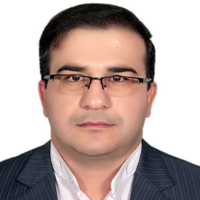Utilizing the combined approach of GIS and ANP - DEMATEL method to rank factors affecting the optimal location of urban green spaces - Case study: Masjid Suleiman City
Urbanization is a developing phenomenon, and the analysis of the appropriate location and the geographical distribution of urban green space plays a significant role in the development and future of the city. Although in the past, green spaces were primarily manifested in the beautification and appearance of urban areas, nowadays, for several reasons, it is considered as a breathing space of the cities. The growth of industry and the increase in population in cities have led to speculative constructions that do not pay enough attention to health issues, provision of sufficient light and healthy air, and leisure spaces in buildings. Moreover, the necessity of creating new urban land use to meet the ever-increasing needs of urban dwellers has gradually reduced the share of urban green space, which is the consequence of limiting the access of urban dwellers to nature. But for some reason, at the beginning of the 20th century, the urban man showed a renewed attention to nature and green spaces, which manifests itself in creating functional gardens instead of recreational gardens that respond to the new needs of citizens. The present study aims to Rank the influencing factors to locate urban green spaces in Masjed Soleyman city.
The present applied study employed an analytical-descriptive method. Reliable internal and external sources related to the subject were reviewed, and in some cases, field studies and referrals to related organizations were conducted for data collection. In this research, the DEMATEL-ANP-integrated approach was employed, and the criteria weights were calculated. Then, the layer of each weight was entered into the Arc GIS software.
As the research findings show, 14 criteria are involved in the optimal location of urban green spaces in Masjid Suleiman, distance to commercial centers, distance to waste and empty lands, distance to administrative centers, distance to medical centers, distance to educational centers, distance to existing green spaces, distance to industrial centers, distance to urban facilities and equipment, distance to military centers, distance to religious centers, distance to communication paths, and density.
The results of this study showed the priority of the mentioned 14 indicators in order from low to high: proximity to residential centers (0.09263, rank 1), proximity to educational centers (0.07428, rank 2), proximity to cultural centers (0.07268, rank 3), population density (0.07154 and rank 4), proximity to communication ways (0.07092, rank 5), proximity to religious centers (0.06979, rank 6), proximity to existing green spaces (0.06967, rank 7), proximity to medical centers (0.06934, rank 8), proximity to commercial centers (0.06923, rank 9), proximity to urban facilities and equipment (0.06902, rank 10), proximity to military centers (0.06874, rank 11), proximity to administrative centers (0.06761, rank 12), proximity to industrial centers (0.06729, rank 13) and proximity to empty and barren land (0.06726, rank 14).
- حق عضویت دریافتی صرف حمایت از نشریات عضو و نگهداری، تکمیل و توسعه مگیران میشود.
- پرداخت حق اشتراک و دانلود مقالات اجازه بازنشر آن در سایر رسانههای چاپی و دیجیتال را به کاربر نمیدهد.


